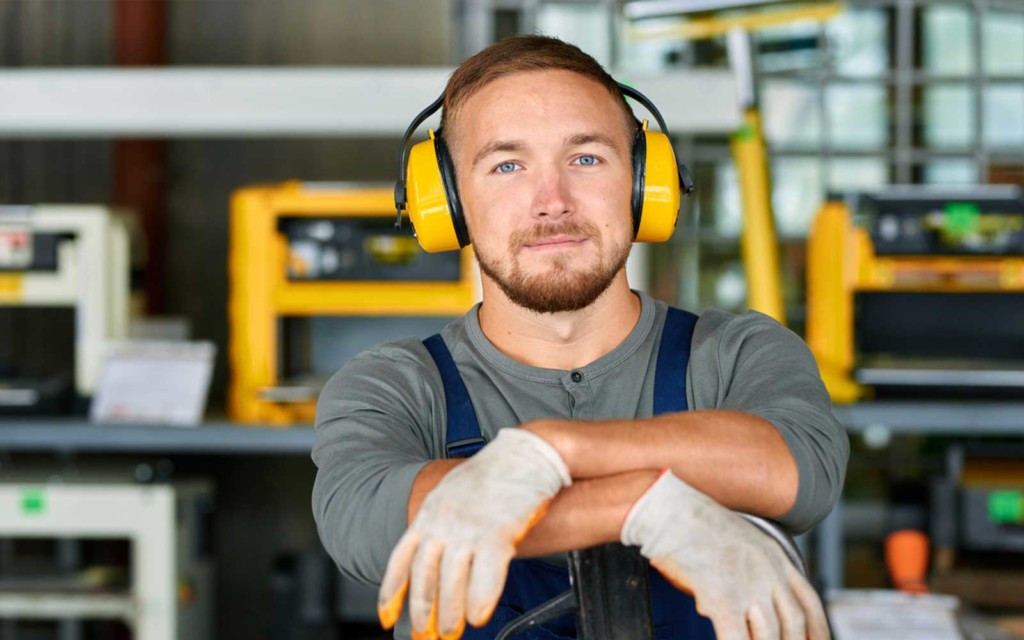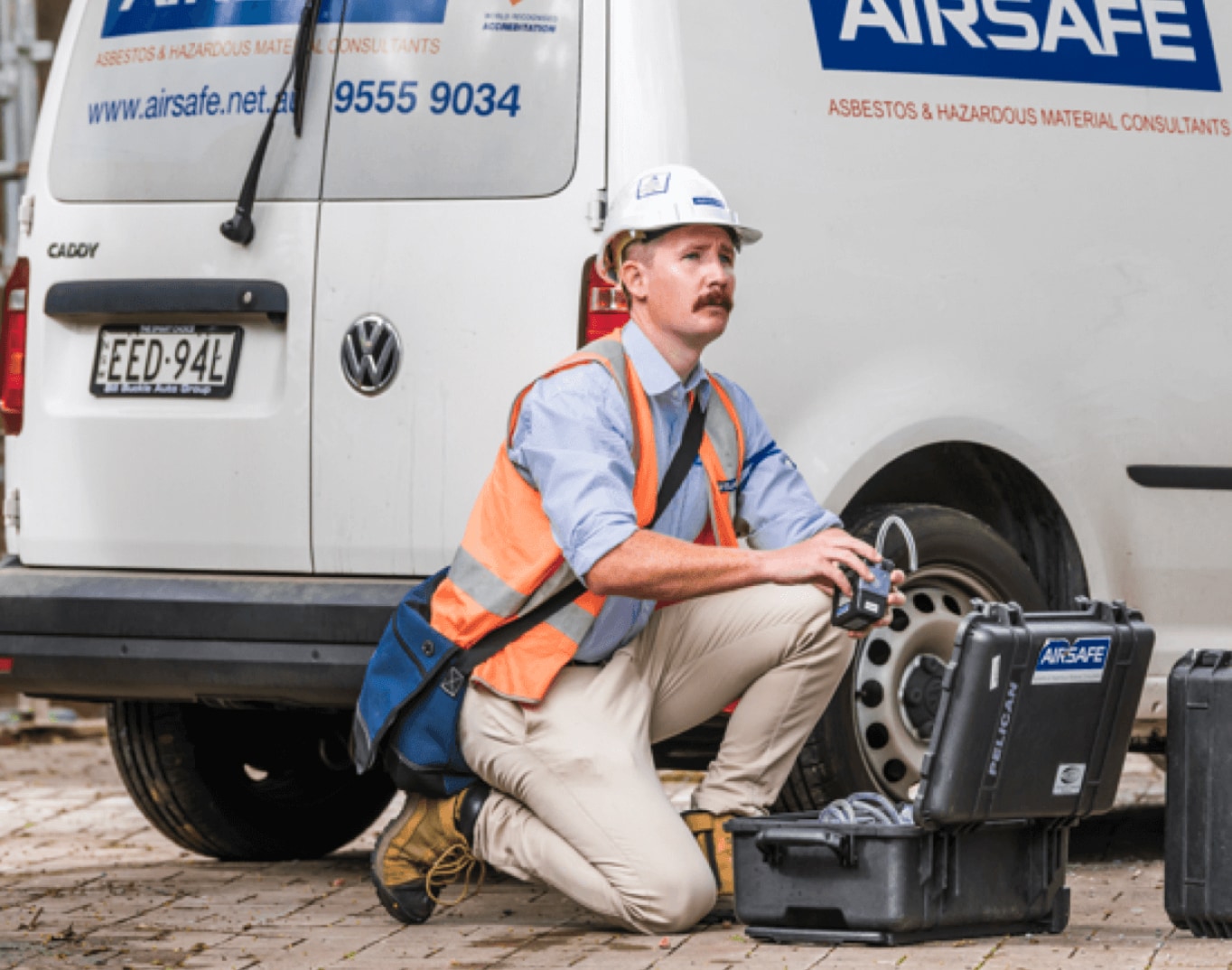The NSW Work Health and Safety Regulation 2017 under the NSW Work Health and Safety Act 2011 requires employers and contractors to identify hazards, manage risks to health and safety, and then maintain and review control measures. Employers have a legal responsibility to ensure that their workers are not exposed to noise that exceeds the exposure standard.
Special provisions apply to noise, audiometric testing, and personal protective equipment (PPE). To cover these and other measures related to noise exposure, SafeWork NSW has issued a Code of Practice: Managing Noise and Preventing Hearing Loss at Work.
Health effects of noise exposure
Employees can suffer temporary or permanent hearing loss when they’re exposed to workplace noise exceeding the exposure standards. Hearing loss happens when hair cells in the inner ear are permanently damaged. Once they are destroyed, they never grow back.
Known as noise induced hearing loss (NIHL), the damage usually occurs over a number of years. Often a permanent condition, it can have a negative impact on an employee’s life.
There are also cases where loud noises like explosive powered nail guns, firearms, stamping presses and forges can damage hearing instantly. This is called acoustic trauma.

-
There are two different exposure standards: one representing the average noise workers can be exposed to over a working day, the other representing the maximum allowable noise they can be exposed to. The exposure standards are:
- 85 decibels measured as an average over an eight hour work day. 85 decibels is approximately the amount of noise made by a blender, lawnmower or leaf blower.
- 140 decibels as a maximum for ‘peak’ or one-off noise. Any exposure above this level can instantly damage hearing. This is approximately the amount of noise made by a sledgehammer or gunshot.
It’s worth noting that exposure levels like these represent legal maximum levels and are linked to proven hearing damage. But noise can also create an unpleasant work environment or hinder productivity even when it’s within the legal exposure standards.
When Airsafe carries out noise assessments, we recommend ways of reducing workplace noise as much as possible, even when it doesn’t exceed the exposure standards, using guidelines like the one metre rule (if a worker needs to raise their voice to talk to someone one metre away, the noise level is probably too high).
-
If you’re concerned that your workers might be exposed to excessive noise, the first step is to get noise assessment and monitoring conducted by experienced occupational hygienists like Airsafe.
To determine whether workers are potentially exposed to a noisy workplace, different parameters can be measured and compared to the current workplace exposure standards by shadowing each workstation, and by use of personal sound exposure meters.
Airsafe uses audio dosimetry consisting of a microphone and electronic recorder that is small enough to be attached to an operator. The method is good for employees who are not exposed to continuous noise because the instrument averages all noise exposure over a full shift.
-
As part of Airsafe’s noise assessment, we’ll recommend ways for you to control noise in your workplace. Our recommendations follow the standard hierarchy of controls, so the preference is always to eliminate the source of noise altogether if that’s possible.
If eliminating noise isn’t possible, we can recommend other options (in descending order of preference) such as:
- changing equipment to reduce noise
- putting barriers between noise sources and workers
- limiting the time a worker spends near a noise source
- using longer leads, hoses and extension cords to add distance between noisy equipment and workers
- using personal protective equipment, like earmuffs or earplugs.
SafeWork NSW provides six easy ways to keep noise levels low:
- buy quiet – look for the quietest plant and machinery for the job – ask the manufacturer/supplier for information about noise levels
- change the way you do the job – e.g. glue don’t hammer, weld don’t rivet, lower don’t drop
- reduce noise levels at the source – e.g. fit suppressors to exhausts, turn down the volume, change fan speeds
- isolate the source of the noise – e.g. use barriers, remote controls or sound-proof covers
- reduce exposure levels – e.g. restrict access to noisy areas, provide quiet areas for rest breaks, limit time spent in noisy areas
- use personal hearing protection, but only as a last resort.
If you are asking your workers to regularly use personal protective equipment, legally you must provide audiometric testing. Testing should be provided within three months of starting work, and at least every two years from then on.
Until 31 December 2023, SafeWork NSW provided an exemption to this regulation, but the exemption is no longer in force and audiometric testing must be provided. See more details on SafeWork NSW website.
Some amount of noise is an unavoidable part of doing business, but excess noise levels don’t just make a workplace unpleasant and stressful – they can cause permanent hearing damage to you and your workers. And if you’re not controlling noise properly, you may be breaking the law.
Noise exposure is often combined with other forms of workplace hazard: for example, welding can expose workers to carcinogenic fumes and radiation as well as high noise levels. Rather than dealing with each workplace risk in a piecemeal manner, you need a holistic, comprehensive approach. That’s why engaging a qualified and experienced occupational hygiene team like Airsafe’s is a great first step.
Airsafe can help you make sure you comply with your legal obligations, and keep your employees protected from excess noise.
Contact us for a fast quote on a noise and safety assessment.




